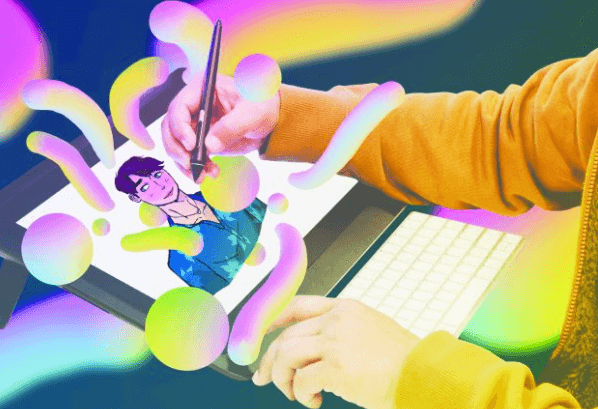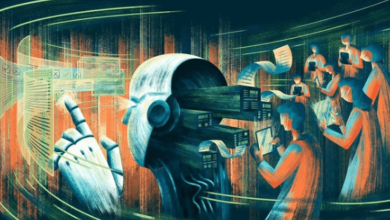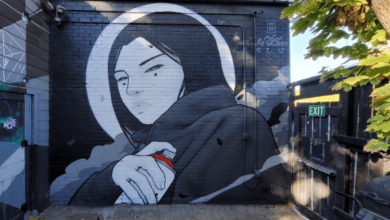The Evolution of Digital Art in the Age of Technology

Digital art has undergone a remarkable transformation over the years, evolving alongside technological advancements that have reshaped the way we create, experience, and appreciate art. From its humble beginnings as basic computer-generated designs to the highly immersive and interactive masterpieces of today, digital art reflects the synergy between human creativity and cutting-edge innovation. As technology continues to evolve, digital art has emerged as a dynamic medium that is redefining artistic boundaries and inspiring a new generation of creators.
The Origins of Digital Art
The roots of digital art can be traced back to the mid-20th century when artists began experimenting with early computers to create geometric patterns and abstract designs. These initial works, though rudimentary by today’s standards, laid the foundation for the digital art movement. The introduction of pixel-based graphics in the 1970s and 1980s marked a significant milestone, enabling artists to create more intricate images using software programs. Tools like Adobe Photoshop and CorelDRAW revolutionized digital art by providing creators with an extensive range of features to manipulate and enhance their designs.
The Internet Revolution in Digital Art
As the internet became more accessible in the 1990s, digital art entered a new phase of evolution. Online platforms and social media offered artists the opportunity to share their work with a global audience, fostering collaboration and inspiring innovation. This era saw the rise of digital illustrations, photo manipulation, and vector graphics, with artists exploring new styles and techniques. The affordability of personal computers and graphic tablets further democratized digital art, making it accessible to aspiring creators worldwide.
Modern Digital Art: 3D, VR, and AR
The 21st century brought transformative technological advancements that propelled digital art into new dimensions. The emergence of 3D modeling and rendering software enabled artists to create hyper-realistic designs for movies, video games, and advertisements. Virtual reality (VR) and augmented reality (AR) technologies opened doors to immersive experiences, allowing audiences to engage with art in entirely new ways. Interactive installations and virtual exhibitions blurred the lines between the physical and digital worlds, offering viewers an active role in the artistic process.
The Role of Artificial Intelligence in Digital Art
Artificial intelligence (AI) has become a driving force in the evolution of digital art, introducing a collaborative relationship between humans and machines. AI-powered tools can analyze existing artwork, generate original pieces, and assist artists in creating complex compositions. Platforms like DeepArt and Runway ML have gained popularity for their ability to produce unique and experimental works that challenge traditional notions of authorship and creativity. Machine learning algorithms have also enabled artists to explore styles, patterns, and designs that were previously unattainable, fostering a new era of artistic innovation.
The Impact of Blockchain and NFTs
The rise of blockchain technology and non-fungible tokens (NFTs) has further revolutionized the digital art landscape. NFTs provide a way to authenticate and monetize digital artwork, addressing longstanding concerns about ownership and copyright in the digital realm. Artists can now sell their creations directly to collectors, bypassing traditional gatekeepers like galleries and auction houses. The NFT boom has attracted both established artists and newcomers, creating a vibrant marketplace for digital art and sparking debates about its cultural and economic implications.
Digital Art as a Tool for Activism
Digital art has also played a significant role in social and environmental activism, with artists using their platforms to raise awareness about critical issues. Animated campaigns, interactive infographics, and thought-provoking digital installations have become powerful tools for advocacy. These works leverage the universal accessibility of digital platforms to amplify voices, inspire action, and foster global conversations.
Education and Accessibility in Digital Art
Education and accessibility have also been transformed by digital art. Online tutorials, digital drawing apps, and creative communities have made it easier than ever for individuals to learn and practice art. Tools like Procreate, Blender, and Krita cater to beginners and professionals alike, offering intuitive interfaces and powerful features. Digital art courses and workshops, often available for free or at low cost, enable aspiring artists to hone their skills and connect with mentors from around the world.
Challenges Facing Digital Art
Despite its many advantages, the evolution of digital art has not been without challenges. Issues like digital piracy, algorithmic bias, and the environmental impact of energy-intensive technologies have sparked important conversations within the artistic community. Artists and technologists are working together to address these concerns, developing sustainable practices and ethical guidelines to ensure the continued growth of digital art as a force for good.
The Future of Digital Art
The future of digital art is as dynamic as its past, with emerging technologies poised to redefine creativity once again. Advances in quantum computing, neural networks, and real-time rendering are expected to push the boundaries of what is possible in digital art. Collaborative platforms that integrate AI, VR, and blockchain technologies will empower artists to create groundbreaking works that challenge conventions and captivate audiences.
Conclusion
Digital art has evolved into a powerful medium that bridges the gap between human creativity and technological innovation. From its origins in early computer graphics to its current role in AI-generated masterpieces and blockchain-enabled ownership, digital art reflects the endless possibilities of artistic expression in the age of technology. As new advancements continue to emerge, digital art will remain a testament to the transformative power of imagination and innovation, inspiring artists and audiences alike.




